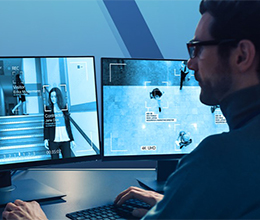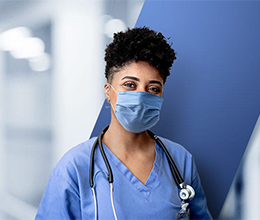Video surveillance systems are most commonly used for public safety and preventing crime. However, they can also be very useful for many other applications not directly related to crime prevention. With advanced analytics and the ability to connect to networks via the internet, these systems have become very versatile and dynamic.
Industries such as healthcare and retail can have specialized applications such as at-home monitoring of elderly patients or to measure customer traffic, while more general uses can include employee training, traffic monitoring, employee safety and mitigating litigation.
Uses within the healthcare industry
Healthcare institutions can use panoramic cameras that offer 360-degree viewing and video analytics data in surveillance systems to help them meet operational goals. This can include detecting when patients have not been checked on in a timely fashion according to their healthcare needs and alerting appropriate staff to do so.
Surveillance systems can also be used to analyze patient and visitor traffic with the goal to shorten wait times. Alternatively, a video surveillance system with the right video analytics solution can be used at an elderly patient's home to detect in real time if the patient has fallen or become immobilized.
Uses in retail
A quality video surveillance system with advanced video analytics can be very useful to a retail operation. Retailers can use video surveillance footage to monitor customer traffic, helping to determine what timeframes and days are busiest. They can also analyze video data to see which specific departments experience the most or least foot traffic and to help determine other customer spending habits and behavior.
From an employee management perspective, retailers can use video surveillance systems to help create the most effective scheduling of employees so they can be appropriately staffed during those peak operating times. In addition, video data can be used to help increase employee productivity and to help streamline operational processes through active monitoring of equipment and systems.
Employee training and safety
Video surveillance systems can be used by manufacturers to monitor if employees are maintaining proper protocols and following applicable safety rules, helping to determine if they need improvement or additional safety training. Video IP cameras combined with applicable analytics can alert employers of unauthorized access to restricted areas or unsafe premises of building sites.
Technicians and maintenance personnel in warehouses or manufacturing operations can also use surveillance systems to detect if equipment needs repair or if it is operating unsafely. By being able to proactively identify issues or even potential problems, employers can keep workers safe and injury free.
Traffic monitoring
Video surveillance systems connected to outdoor cameras serve as an effective way to monitor traffic. The data collected from traffic cameras can be used for a wide variety of purposes. These can include:
Traffic reporting – the video feed from cameras placed in areas where congestion is common can share feeds with radio and TV news outlets that can pass the information on to commuters as traffic reports. These cameras are typically placed on highways, interstates, major roads and key intersections to record traffic congestion and vehicle accidents.
Road expansion – the data collected from traffic cameras helps monitor traffic flows and patterns on roads and major highways maintained by departments of transportation. This data plays a valuable role in determining where to focus on future road development and construction.
Safer driving – when cameras are posted at major intersections, they can be effective at encouraging safe driving habits, while discouraging moving violations.
Mitigating litigation
With lawsuits and litigation being very common, it's important for individuals and businesses to protect themselves from unwarranted lawsuits. Video footage from cameras can be valuable in a case where an organization is sued due to an employee injury or death.
In many instances, the event can be a result of the employee violating safety rules and procedures. If that is the case, footage from video cameras can serve to provide evidence of any violation or negligence that can help protect the organization from being wrongfully sued.
Observational research
Whether in a zoo, laboratory or even in the wild, video surveillance systems play a vital role in monitoring animal behavior and associated patterns. Research scientists can use day and night footage from surveillance cameras to remotely record animal behavior that those animals normally wouldn't engage in with humans nearby.
From a research perspective, surveillance cameras and recorders can be used for just about any type of observational research that requires long-term monitoring regardless of the time of day (whether for animals or humans), including sleep behavior patterns, mating rituals and breeding behavior, reactions to medicines in clinical trials, and more.
Conclusion
The uses for video surveillance systems clearly go beyond preventing crime. Although crime prevention continues to be the most common and obvious application, advanced video analytics and network connectivity have allowed surveillance systems to become very useful for a wide range of applications that are not crime related.



